The famous “Japanese Archipelago” periphrase speaks volumes about the country’s geography. Apart from the four main islands of Hokkaido, Honshu, Shikoku, and Kyushu, Japan is made up of countless islands and islets of various areas, manned and unmanned. The main island, Honshu, is surrounded by other large islands: Hokkaido in the north, Shikoku, and Kyushu in the southwest. Hokkaido Island and the Okinawa Archipelago lie at the northern and southern ends of the Japanese archipelago. The wide range of latitudes gives the country a variety of landscapes, ecosystems, and climates. But how many islands in total are there in Japan?
Japan, An Archipelago and Island-Studded Country
Japan is located in the Pacific Ocean in the southeast of the Eurasian continent. The territory is surrounded by the Sea of Okhotsk, the Sea of Japan, the Pacific Ocean, and the East China Sea.
The Japanese territory is in the form of an island arc that stretches along a northeast/southwest axis. It is a volcanic archipelago, located on the Pacific Ring of Fire, where several tectonic plates intersect, explaining the frequency of earthquakes. These volcanic islands line over 3,000 km from Russia to the island of Taiwan. This topography is the origin of the nickname “Archipelago” by which Japan is regularly referred as. It also results in a great diversity of climates: an arctic zone in Hokkaido, humid subtropical in Honshu, oceanic subtropical in Okinawa.
Among the myriad of islands that make up the Japanese archipelago, there are four main islands, respectively called, from the north to the south: Hokkaido, Honshu, Shikoku, and Kyushu. Some bays are dotted with islands and islets, such as Matsushima Bay in the Tohoku region or Nagasaki Bay in Kyushu.
The Main Islands of Japan: Hokkaido, Honshu, Shikoku, and Kyushu
Let’s take a closer look at the geographical features of Japan’s four main islands, plus the Okinawa Archipelago.
Hokkaido (北海道, “Way to the North Sea”) is the northernmost island in Japan. Covering an area of 83,457 km², it is surrounded by the Sea of Okhotsk, the Pacific Ocean, and the Sea of Japan. The island is one of the largest wilderness areas in Japan and home to spectacular national parks. The forests abound in thermal springs, and the landscape is traversed by gorges. Caldera lakes sprinkle the mountains and mountain plateaus. Volcanoes are still active, such as Mount Meakan (雌阿寒岳, Meakan-dake) and the Daisetsuzan volcanic mountains (大雪山).
Honshu (本州, “main province”, the main island), covers an area of 227,943 km². It covers more than 60% of the area of the country, and 80% of the population lives there. The Japanese megalopolis spreads out on Honshu, bringing together a string of metropolises within an almost continuous urban fabric: Sendai, Tokyo, Shizuoka, Nagoya, Kyoto, Osaka, Kobe, Okayama, and Hiroshima.
Shikoku (四 国, “Four countries” or “Four provinces”) is separated from Honshu by the Seto Inland Sea (瀬戸内海, Seto Naikai). It covers an area of 18,800 km². Among the four large islands of Japan, Shikoku is the smallest and least populated island. Shikoku is less urban and much more rural than the other big islands. It offers the image of a natural side of Japan. The landscape is crisscrossed with rice paddies, fishing and farming villages, wooded hills dotted with temples, with a coastline that has remained almost intact from major development.
Mountainous and volcanic Kyushu (九州, “nine provinces”) is the southernmost of the four main islands. It covers an area of approximately 36,780 km², making it the third-largest island in Japan, after Honshu and Hokkaido. Outside the large urban centers are prehistoric sites and mountain sanctuaries. Kyushu’s volcanic activity is intense. Sakurajima is one of the most active volcanoes in the country. Mount Aso is one of the largest active volcanoes in Japan and features one of the largest calderas in the world.
At the southwestern end of the archipelago, bordering the Pacific Ocean and the East China Sea, the Okinawa Archipelago (沖縄, “Rope in the open sea”) borders the Tropic of Cancer. Covering an area of 2,281 km², the prefecture has 160 islands in total, including 47 inhabited islands. The coral reefs create a shield that protects paradisiacal beaches bathed in crystal clear waters.
How Many Islands Are There in Japan ?
The figure of 6,852 islands is given by many sources, foremost is the annual report published by the Statistics Office of the Ministry of Internal Affairs and Communications. Five islands are officially considered “main” islands: Hokkaido, Honshu, Shikoku, Kyushu, and the main island of Okinawa. The other 6,847 islands are referred to as “isolated” islands. Among the dizzying number of islands that make up the archipelago, around 416 islands are currently inhabited.
On closer inspection, the counting is more complex than it seems, due to the difficulty in defining the very notion of an island. The minimum area retained to qualify an expanse of land surrounded by water as an island changes the count. Thus, depending on the characterization retained, the estimates can go up to 7,000 islands.
The Diverse Ecosystems of the Japan’s Islands
Each island has its own uniqueness and ecosystem — from the volcanic mountains, primary forests, and swamps of Hokkaido, to the subtropical jungle and mangroves of Okinawa, the volcanic cones, calderas, and swamps of Kyushu, and limestone plateaus, and terrace cultivation of Shikoku.
Endemic Species on Okinawa’s Iriomote Island
Some islands have their individuality thanks to endemic ecosystems. Iriomote island, in the Okinawa archipelago, is nicknamed the “Galapagos of the East” due to the presence of protected endemic species. Among the many wild animals that live there, the Iriomote cat is an endemic subspecies of the leopard cat. The population of Iriomote cats is estimated at only a hundred individuals. The island is covered with jungle and primary forests, which extend into mangroves along the coastlines.
Cat Islands of Japan
A dozen Japanese islands are famous for their feline populations, often called “cat islands” (nekojima). These include the cat islands of Ainoshima (相島) in Fukuoka, Fukashima Cat Island in Oita, on Kyushu, Manabeshima (真鍋島), in Okayama Prefecture, or even Tashirojima (田代島), in Miyagi Prefecture. Okunoshima Island, in the Inner Sea of Japan, is home to hundreds of wild rabbits.
Environmental Awareness and Cultural Preservation on Sado Island
Insularity allows great preservation of cultural specificities. Off the coast of Niigata, Sado Island focuses on nature and traditions. The people of Sado practice agricultural activities, primarily rice and oyster farming with strong environmental awareness. Traditional arts, crafts, and performing arts are still very much alive there.
The Abandoned Japanese Island of Gunkanjima
Some islands participated in the industrialization of Japan during the Meiji era, notably Hashima Island (端島), off Nagasaki. This battleship island is called Gunkanjima (軍艦島, “Warship Island”). Hashima played a major role in the industrialization of the country. Its former underwater coal mines, now depleted, made it one of the most densely populated places in the world, until post-war mining declined. This ghost mining island has become the archipelago’s most famous abandoned island. It is accessible by ferry from Nagasaki, for a guided mid-day excursion. The abandoned ruins exude a deliciously gloomy mysterious atmosphere.
Art Islands of Japan
The “artistic” islands are attractive for their open-air installations and museums. In the Okayama region, on the Seto Inland Sea, Naoshima (直島) and Teshima (豊島) integrate art into nature. Naoshima is renowned for its contemporary art museums, outdoor sculptures, and architecture. Teshima also has its museum of contemporary art, with unusual architecture. A little further north in the Seto Inland Sea, Inujima (犬島), off the coast of Setouchi, features many contemporary outdoor works of art. They reappropriate the post-industrial decor with a certain ecological sensitivity.
The Futuristic Island of Odaiba, Tokyo
In a futuristic style, the artificial island of Odaiba (お台場) is a laboratory for the architecture and technology of tomorrow. Built on a polder in Tokyo Bay, this entertainment hub is a shopping and leisure paradise. There are innovative museums, theme parks, and shopping centers.
How to Get to the Islands in Japan?
To connect its islands, Japan has developed major transport infrastructure and the islands are easily accessible from large cities. Hokkaido in the north and Kyushu in the southwest are connected to Honshu by Shinkansen and daily flights.
The Hokkaido Shinkansen Line joins the northern island via the Seikan Tunnel, a technical achievement that makes it the longest underwater rail tunnel in the world, nicknamed “Zone 539” for its length of nearly 53.9 kilometers (53.85 kilometers to be precise). Sapporo, the main city of Hokkaido, is accessible by domestic flights and also by international flights from Seoul, Bangkok, Hong Kong, Taiwan or Vladivostok, Helsinki, and Sydney due to the growing popularity of Hokkaido in Europe and Australia.
The islands of the Seto Inland Sea can be divided into two parts: the western islands and the eastern ones. Those in the west are accessible by ferries from Okayama Prefecture (port of Kojima Kanko) and Kagawa Prefecture. For the eastern islands, you will need to board one of the ferries from Kagawa Prefecture (Takamatsu Port) or Okayama Prefecture (Uno Port). The artistic island of Naoshima is accessible from the ports of Uno (Okayama), Takamatsu (Kagawa), and from the island of Inujima.
On Kyushu Island, Fukuoka is the best-served city by Shinkansen and plane. We can also reach Kyushu by Kagoshima, thanks to domestic flights and Shinkansen lines, or via the airports in all the prefectures of the island.
As for Shikoku Island, there is no access by Shinkansen, but JR trains run to Takamatsu from Okayama on Honshu. There are also 4 airports on Shikoku: Takamatsu, Tokushima, Kochi, and Matsuyama.
The Okinawa Archipelago, in the southwest of the archipelago, can be accessed through Naha Airport on the main island, and from Ishigaki and Miyakojima Airports. Actually, many domestic flights allow you to make the trip from big Japanese cities such as Tokyo, Osaka, Nagoya, Hiroshima, or Fukuoka. There are even a number of international flights to Naha and Ishigaki airports. The islands of Okinawa are connected by ferries and high-speed boats, and, for some, by air links.
The large islands are also interconnected by monumental bridges. Shikoku is connected to Honshu by several bridges spanning the Seto Inland Sea to its islands. It is even possible to cycle from Honshu to Shikoku thanks to a scenic bicycle route called Shimanami Kaido, that crosses those bridges to go island hopping.
The famous Akashi Strait Suspension Bridge is an engineering masterpiece. It crosses the Seto Inland Sea to connect Kobe, on Honshu, to Shikoku, and crossing Awaji Island.
If you want to explore small Japanese islands, do not hesitate to browse our articles on the subject:
- Relax and Discover the Local Life of Setouchi Along the Shimanami Kaido
- The Perfect Two Day Getaway On Enoshima Island
- Island Hopping the 3 Islands of Goto City
- Trekking Nozakijima: Discover an Abandoned Island in Japan!
- Traveling Back in Time on Taketomi Island, Okinawa
Japan is made up of five main islands including the Okinawa Archipelago. The Statistics Office of the Ministry of Internal Affairs and Communications lists 6,852 islands, with 416 of these islands inhabited. These islands are interconnected by a dense network of road, rail, sea, and air links. Now, set sail for the islands of the Japanese archipelago!


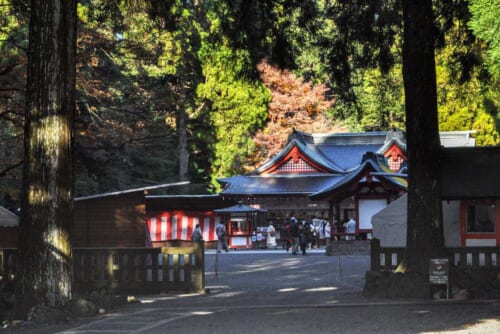
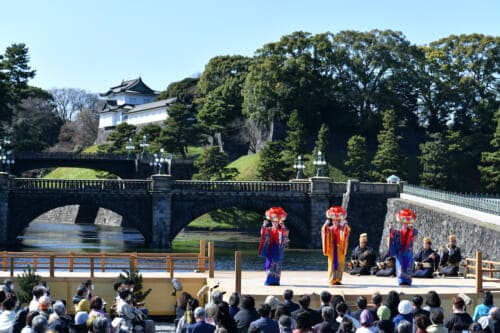
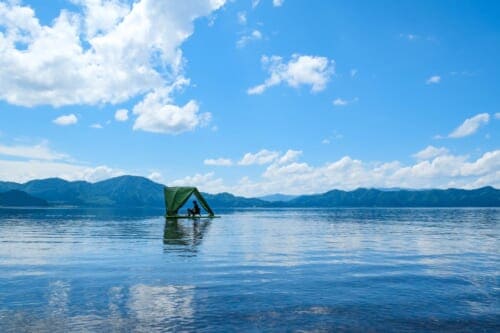
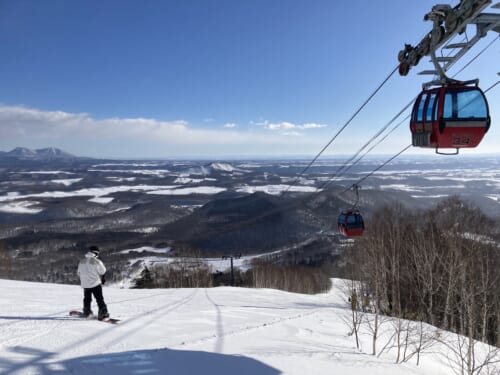
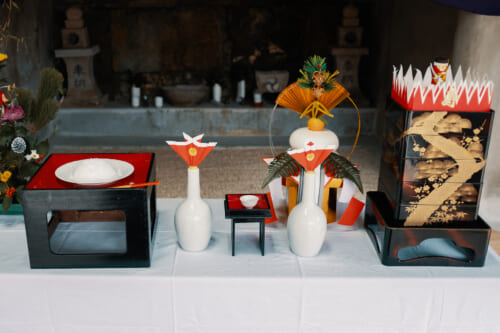


Marie: Thanx for the good info on the Japan islands. Very informative – I love Japan! And will go again very soon as soon as they lift all of these restrictions from Covid.
I thot I’d point out the Hokkaido Shinkansen you mentioned that the underwater distance is 53.85 meters is the longest underwater tunnel is incorrect. 53.85 meters is only 176.5 feet … I believe you meant to say 53.85 kilometers which equals 33.46 miles. The Eurostar Odyssey from London to Paris is 50 kilometers [31 miles] claims they are the longest continuous underwater tunnel … u might want to update!
Hi Jerry,
Thanks for catching that! We’ve updated it accordingly. 😉